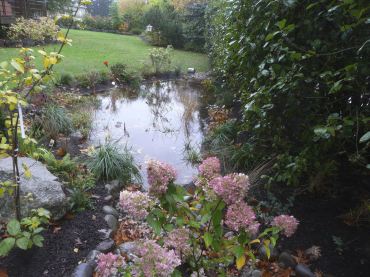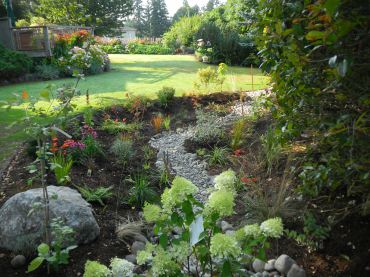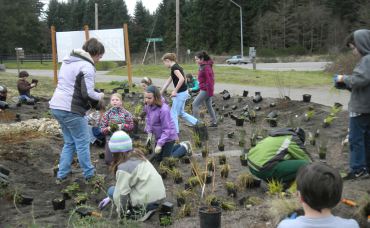 Controlling storm-water runoff is a necessity for your home and your yard, but it’s sometimes relegated to that dreaded list of outdoor chores. But what if adding an efficient runoff system meant the addition of a beautiful garden at the same time?
Controlling storm-water runoff is a necessity for your home and your yard, but it’s sometimes relegated to that dreaded list of outdoor chores. But what if adding an efficient runoff system meant the addition of a beautiful garden at the same time?
That’s exactly what rain gardens are. They’re designed to store and filter rain water — helping to prevent flooding as well as reducing harm to rivers and streams — but at the same time they create a beautiful and low-maintenance landscape area in your yard.
Rain gardens can be an especially helpful solution for homeowners who have issues with erosion or water running under the house. The rain-garden system uses pipes to redirect runoff from the roof straight into the garden, and the system is based on the roof size.
For gardeners who don’t like to fuss, there is another advantage. Rain gardens work best with native plants and once they’re well-established, they require little maintenance.
 In unincorporated Kitsap County, residential and small-commercial property owners can get everything they need to get started from Kitsap Conservation District. KCD staff will come to the site for a free consultation, provide specs as well as list of contractors — and then reimburse the property owner $1,000 of the installation cost.
In unincorporated Kitsap County, residential and small-commercial property owners can get everything they need to get started from Kitsap Conservation District. KCD staff will come to the site for a free consultation, provide specs as well as list of contractors — and then reimburse the property owner $1,000 of the installation cost.
If you want to get your hands dirty and do it yourself, KCD will instead provide staff to help with the installation, along with equipment and some free plants. This is done through a program called Dig Days, and to date of the 100 rain gardens installed through the cost-sharing program, a dozen were done through Dig Days.
All you need to do is apply to the program. But there are a few things to keep in mind.
First, not all properties are suitable for a rain garden. Steep slopes (over 15 percent), for example, would have to be engineered and thus are not appropriate for this purpose. And drainfields typically need to be 30 feet away from the potential site. There are also soil conditions and other considerations (KCD will do a soil and infiltration test as part of the consultation).
If a rain garden is not suitable, KCD staff can recommend some alternatives, such as cistern systems that can also double as irrigation storage.
Teresa Brook, who coordinates the Kitsap Conservation District’s rain garden and low-maintenance development (LID) program, said the process of applying for the cost-sharing program is quick and simple. Some watershed areas also receive priority.
 The KCD assistance is only available in unincorporated Kitsap County because it’s funded through the surface and stormwater assessment fee.
The KCD assistance is only available in unincorporated Kitsap County because it’s funded through the surface and stormwater assessment fee.
If you’re curious to see a rain garden in action, check out one of the demonstration sites, which include Olalla Elementary, Klahowya Secondary School (Silverdale), Kitsap Fairgrounds and KCD’s own headquarters.

























